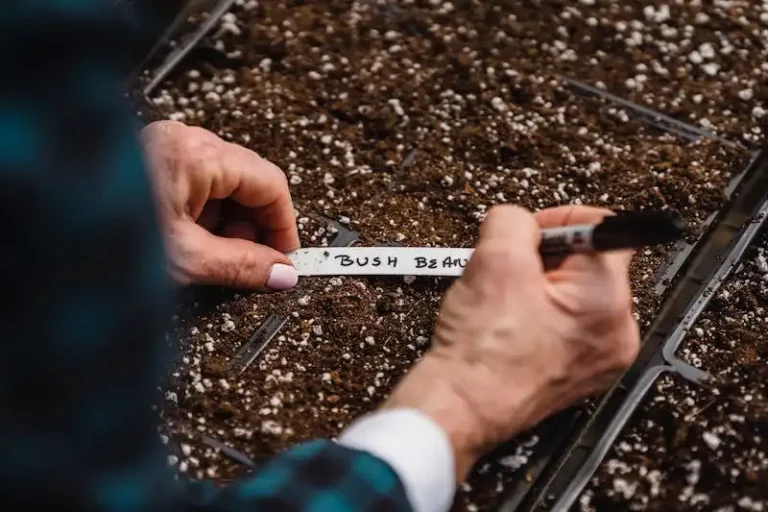Keeping plants healthy and vibrant is an ongoing task for gardeners, and perennial maintenance is a kind of never-ending story. To ensure their long-term health and promote a more compact growth habit, it’s important to know what to cut back and when.
In the fall, as perennials start to fade and drop their foliage, it’s time to pull out the pruners and get to work. Cutting back dying leaves and stems above the ground level is essential, as it not only helps to keep the garden neat and clean, but also prevents diseases. Removing debris and cleaning up fallen leaves is also important, as it reduces the risk of pests and diseases finding shelter throughout the winter.
One general rule of thumb is to cut perennials back to a few inches above the soil level. However, it’s worth making a note that some perennials benefit from leaving a little foliage in place for protection through the winter months. For example, plants like astilbe and daylilies can be simply cut back to around half their original height.
In spring, as the garden starts to wake up, it’s time to give those perennials a proper pruning. This is the best time to remove any dead or diseased growth, and to cut back any remaining foliage from the previous year. Pruning helps to promote more compact growth and encourages the plants to produce more flowers.
When it comes to pruning perennials, it’s important to remember that not all plants require the same level of care. Some perennials, like ornamental grasses and lilies, benefit from being pruned to the ground. Others, like coneflowers and hostas, prefer to be pinched back instead of a heavy pruning.
A good technique to follow is to refer to a plant-specific care guide or a reputable gardening newsletter. These resources provide valuable wisdom on when and how to prune specific perennials. In general, the best guideline is to prune perennials once their flowers have finished blooming, but some early bloomers, like bleeding hearts, need to be pruned right after they finish flowering.
After pruning, it’s also important to mulch around the perennial plants. Mulching helps to protect the roots and conserve moisture, which is especially beneficial during hot and dry summer months. A thin layer of mulch can also help suppress weeds and keep the garden looking tidy.
So, whether you’re a seasoned gardener or just getting started, knowing what to cut back and when is vital for the health and longevity of your perennials. By following these guidelines and maintaining a regular pruning schedule, your garden will be filled with beautiful, vibrant flowers year after year.
When to Cut Back Perennials
Knowing when to cut back perennials is an important aspect of perennial maintenance. By double-checking the types of perennials you have in your garden, you can determine the best time to cut them back.
In general, it is best to wait until after the first hard frost in the fall to start cutting back perennials. This allows the plants to go dormant for the winter and reduces the risk of new growth being damaged by freezing temperatures. Some perennials, such as Joe-Pye Weed and Little Bluestem, actually benefit from not being cut back at all, as their dried flower heads provide interest and food for birds throughout the winter.
For perennials that should be cut back, the technique is fairly simple. Use a pair of clean and sharp garden pruners to trim back the dead or dying foliage. Cut the stems just above the ground, removing any debris or spent blooms. This not only keeps the garden looking tidy, but also helps to prevent the spread of diseases and pests that may be hiding in the decaying plant material.
In addition to cutting back perennials in the fall, it is also important to prepare them for the upcoming winter. One way to do this is by applying a layer of mulch around the base of the plant. Mulching helps to insulate the roots and keep them from freezing during the winter months. It also helps to retain moisture in the soil and suppress weed growth.
When it comes to mulching, there are different opinions on how much and which type to use. In general, a layer of mulch about 2 to 3 inches thick is sufficient. Native mulches, such as shredded leaves or wood chips, are recommended as they break down over time and provide additional nutrients to the soil.
Some gardeners prefer to wait until spring to cut back perennials, as they believe leaving the foliage intact over the winter helps to protect the plants from cold temperatures. While this may be true for certain perennials, it is generally safer to cut them back in the fall to avoid the risk of new growth being damaged by late frosts or winter weather conditions.
By following these guidelines for cutting back perennials, you can extend their blooming period and increase their overall lifespan. It is also important to keep in mind that some perennials, such as daisies and irises, may benefit from a mid-summer pinch to promote re-blooming. The specific requirements for each perennial can typically be found in gardening books, plant tags, or online resources.
In conclusion, knowing when to cut back perennials is an essential part of their maintenance. While different types of perennials have different requirements, in general, cutting back after the first hard frost in the fall and mulching around the base of the plants can help to protect them throughout the winter. By following these guidelines and keeping up with regular maintenance, you can ensure that your perennials continue to bloom and thrive year after year.
Advantages to Cutting Back Perennials In Spring
There are several advantages to cutting back perennials in the spring rather than in the fall. Although it is usually recommended to cut back plants in the fall period, there are many benefits to waiting until spring to do so.
- Extended interest: Leaving perennials standing through the winter allows them to provide interest in the garden, especially when there is a blanket of snow. Some plants, like ornamental grasses, can add texture and movement to the winter landscape.
- Encourage blooming: Many spring bloomers, such as iris and joe-pye weed, benefit from being cut back in early spring. By cutting them back, you can promote new growth and ensure that they bloom to their fullest potential.
- Clean-up time: By delaying the cutting back of perennials until spring, you can save time in the fall when there is already a lot of garden clean up to be done. This allows you to focus on other tasks, such as weeding and preparing the garden for colder weather.
- Provide protection: Leaving stems and foliage intact throughout the winter months can provide some protection against cold and frost for the plant’s root system. The debris also acts as mulch, retaining moisture and providing insulation for the plants.
- Learn from nature: Sometimes, it’s best to let nature take its course. By observing which plants survive the winter without any cutting back, you can learn which ones are hardy in your particular climate and will benefit from this minimal maintenance approach.
In general, it is recommended to prune and trim perennials in the spring. However, it is important to use your own judgment and knowledge of each specific plant. Some perennials may benefit from fall cutting back, while others may not need it at all. Consult reliable sources or seek advice from local gardening experts to determine the best course of action for each individual plant in your garden.
Remember, always clean your gardening tools, such as pruners, before and after each use. This helps prevent the spread of diseases and ensures the health of your plants. Additionally, make sure to properly dispose of the removed plant material. Some stems and foliage can be added to compost piles, while others may need to be thrown away.
Overall, cutting back perennials in the spring provides numerous advantages. It extends the visual interest in the garden, encourages blooming, saves time during fall clean-up, provides protection for the plants, and allows you to learn from nature. By following this method, you can ensure the health and beauty of your perennial plants.
Advantages to Cutting Back Perennials In Fall
When it comes to perennial maintenance, one important technique to know is what to cut back in the fall. By cutting back dying foliage and flower stalks in the fall, you can help promote the overall health and appearance of your perennials.
One advantage of cutting back perennials in the fall is that it prevents the spread of diseases and pests. By removing any dead or dying plant material, you can reduce the likelihood of fungal diseases and insect infestations. This is particularly important for perennials that are susceptible to pests like borers.
Another advantage is that cutting back in the fall encourages better flowering in the following years. By removing the spent flower stalks, you allow the plant to focus its energy on root and foliage growth, rather than producing seeds. This can result in more plentiful and healthy blooms in the spring.
Furthermore, cutting back perennials in the fall makes spring maintenance easier. By removing the dead foliage and flower stubs in the fall, you eliminate the need for cleanup in the spring. This saves time and ensures a clean and tidy garden as the new growth emerges.
It’s important to note that not all perennials should be pruned the same way. Some perennials, like iris and sedum, are best pruned just above the ground, while others should be pinched back a few inches above the soil. Be sure to research the specific pruning requirements of each plant to ensure you are pruning them correctly.
In general, cutting back perennials in the fall is a beneficial practice that can improve the overall health and appearance of your garden. By removing dead foliage and spent flowers, you can prevent the spread of diseases and pests, encourage better flowering in the following years, and make spring maintenance easier. So, if you’re wondering what to do with your perennials in the fall, remember that a little pruning can go a long way. Read the almanac for more information on when and how to prune specific perennials.




